 The aim of the present study was to analyse the presence of mycotoxins in corn samples from different regions of Argentina, Bosnia & Herzegovina, Brazil, Chile, Colombia, Croatia, Ecuador, Guatemala, Italy, Mexico, Philippines, Peru, Serbia, South Africa, and Taiwan.
The aim of the present study was to analyse the presence of mycotoxins in corn samples from different regions of Argentina, Bosnia & Herzegovina, Brazil, Chile, Colombia, Croatia, Ecuador, Guatemala, Italy, Mexico, Philippines, Peru, Serbia, South Africa, and Taiwan.Jog Raj*, Hunor Farkaš, Svetlana Ćujić, Zdenka Jakovčević, Robert
Čepela and Marko Vasiljević
PATENT CO, DOO., Vlade Ćetkovića 1A, 24 211, Mišićevo, Serbia
*Corresponding author: [email protected]
The corn samples were delivered to PATENT CO’s lab between September 2022 and February 2023.
In this survey, approximately 1000 samples were analysed by LC-MS/MS triple quadrupole (Agilent 6460 series) using a multi-mycotoxin method for quantification of all mycotoxins present, including:
- ⇰ Aflatoxins (AFB1, AFB2, AFG1, and AFG2)
⇰ Zearalenone (ZEN), α – Zearalenol (α-ZEL) β – Zearalenol (β-ZEL), and Zearalanone (ZAN)
⇰ Diacetoxyscirpenol (DAS)
⇰ HT-2 and T-2 toxins
⇰ Deoxynivalenol (DON), 3-Acetyl Deoxynivalenol (3-ADON), and 15-Acetyl Deoxynivalenol (15-ADON)
⇰ Nivalenol (NIV)
⇰ Fumonisins (FB1, FB2, and FB3)
⇰ Fusaric acid (FA)
⇰ Moniliformin (MON)
⇰ Ochratoxin A (OTA)
⇰ Beauvericin (BEA)
⇰ Enniatin A (ENN A), Enniatin A1 (ENN A1), Enniatin B (ENN B), and Enniatin B1 (ENN B1)

The results for each country are shown as follows:
ARGENTINA 
In 2022, 100% of the corn samples from Argentina were contaminated with one or more than one type of mycotoxin (Figure 1).
⇰ Among these, 3% samples contained two types of mycotoxins and 3% contained three types of mycotoxins, whereas 94% samples were contaminated with more than three types of mycotoxins.
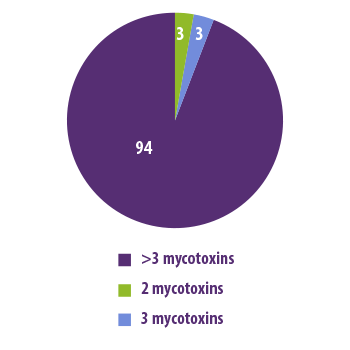
Figure 1. Number of mycotoxins (%) per corn sample from Argentina.
Table 1 shows that fumonisins were the predominant mycotoxins in 2022 harvested corn from Argentina.
 FB1 was detected in 98% of the samples, whereas FB2 and FB3 appeared in 95% and 50% of the corn samples, respectively.
FB1 was detected in 98% of the samples, whereas FB2 and FB3 appeared in 95% and 50% of the corn samples, respectively. DON, with low averages, was detected in 85% of the samples, while 15-ADON, also with a low average, was detected in 50% of the tested samples.
DON, with low averages, was detected in 85% of the samples, while 15-ADON, also with a low average, was detected in 50% of the tested samples. Among emerging mycotoxins, FA was detected in 93% of the corn samples, MON was detected in 65% and BEA in 40% of the corn samples tested using LC-MS/MS.
Among emerging mycotoxins, FA was detected in 93% of the corn samples, MON was detected in 65% and BEA in 40% of the corn samples tested using LC-MS/MS.
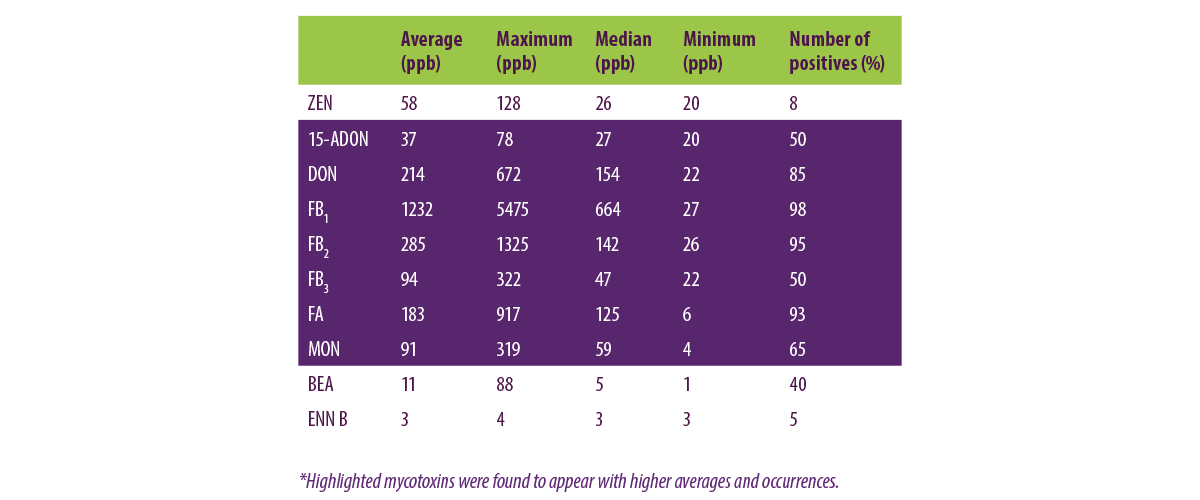
Table 1. Mycotoxin contamination levels (ppb) in corn samples from Argentina in 2022.
BOSNIA AND HERZEGOVINA 
In 2022, 15% of the corn samples from Bosnia and Herzegovina were not contaminated with any mycotoxins, whereas 22% were contaminated with one type of mycotoxin and 63% were contaminated with more than one type of mycotoxin (Figure 2).
⇰ Among these, 11% of the samples had two types of mycotoxins, another 11% had three types of mycotoxins, and 41% had more than three types of mycotoxins.
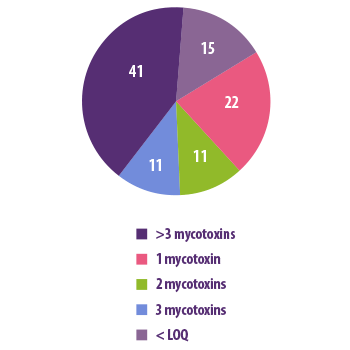
Figure 2. Number of mycotoxins (%) per corn sample from Bosnia and Herzegovina in 2022 harvested corn.
Table 2 shows that fumonisins were the predominant mycotoxins in 2022 harvested corn from Bosnia and Herzegovina.
 FB1 was detected in 63% of the samples, whereas FB2 and FB3 appeared in 44% and 33% of the corn samples, respectively.
FB1 was detected in 63% of the samples, whereas FB2 and FB3 appeared in 44% and 33% of the corn samples, respectively. AFB1, with an average of 30 ppb, was detected in 11% of the samples.
AFB1, with an average of 30 ppb, was detected in 11% of the samples. Among emerging mycotoxins, FA was detected in 70% of the corn samples, MON in 22% and BEA in 52% of the samples.
Among emerging mycotoxins, FA was detected in 70% of the corn samples, MON in 22% and BEA in 52% of the samples.
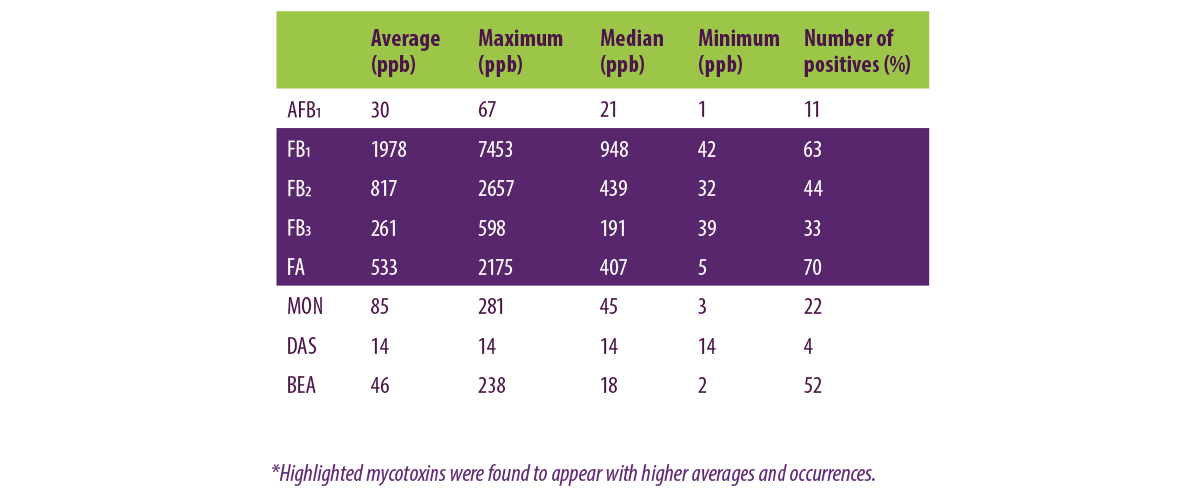
Table 2. Mycotoxin contamination levels (ppb) in corn samples from Bosnia and Herzegovina in 2022.
BRAZIL 
In 2022, 100% of the corn samples from Brazil were contaminated with one or more than one type of mycotoxin (Figure 3).
⇰ Among these, 4% of the corn samples had one type of mycotoxin, 5% had two types, 10% had three types, and 81% of the samples had more than three types of mycotoxins.

Figure 3. Number of mycotoxins (%) per corn sample from Brazil.
Table 3 shows that fumonisins were the predominant mycotoxins in 2022 harvested corn from Brazil.
 FB1 was detected in 100% of the samples, while FB2 and FB3 appeared in 96% and 67% of the corn samples, respectively.
FB1 was detected in 100% of the samples, while FB2 and FB3 appeared in 96% and 67% of the corn samples, respectively. AFB1 was detected in 8% of the corn samples, whereas DON, with a low average, was detected in 39% of the corn samples and NIV was detected in 43% of the samples.
AFB1 was detected in 8% of the corn samples, whereas DON, with a low average, was detected in 39% of the corn samples and NIV was detected in 43% of the samples. Among emerging mycotoxins, FA was detected in 82% of the corn samples, MON in 12%, and BEA in 22% of the corn samples tested using LC-MS/MS.
Among emerging mycotoxins, FA was detected in 82% of the corn samples, MON in 12%, and BEA in 22% of the corn samples tested using LC-MS/MS.
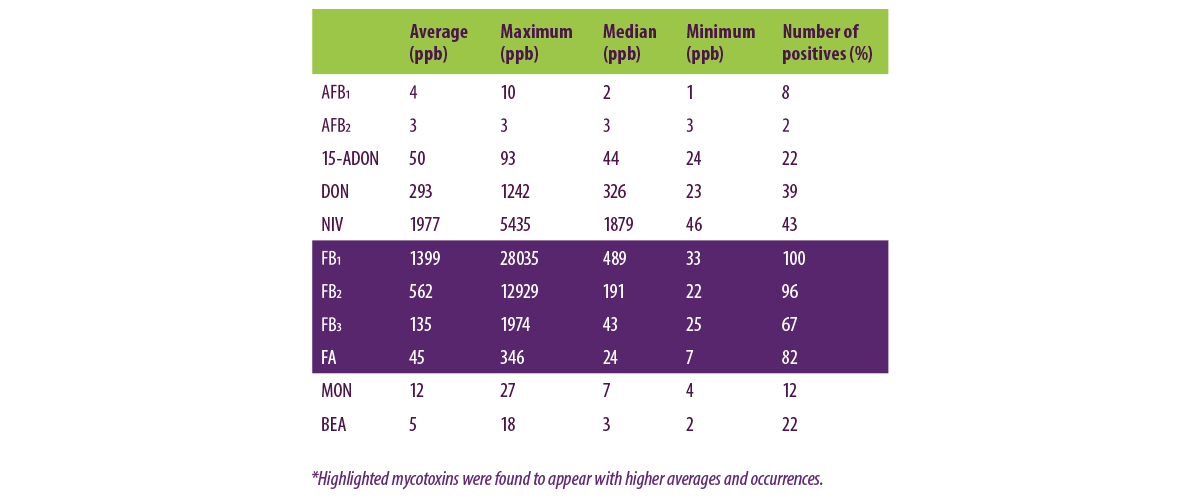
Table 3. Mycotoxin contamination levels (ppb) in corn samples from Brazil in 2022.
CHILE
In 2022, 13% of the corn samples from Chile were not contaminated with any mycotoxin, whereas 10% were contaminated with one type of mycotoxin, 27% with two types of mycotoxins, 3% with three types of mycotoxins and 47% with more than three types of mycotoxins (Figure 4).
⇰ This means that 87% corn samples were contaminated with one or more than one type of mycotoxin.
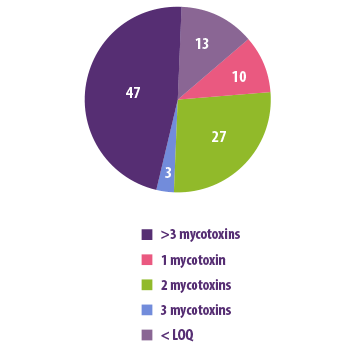
Figure 4. Number of mycotoxins (%) per corn sample from Chile.
Table 4 shows that fumonisins were the predominant mycotoxins in 2022 harvested corn from Chile.
 FB1 was detected in 67% of the samples, while FB2 and FB3 appeared in 33% and 13% of the corn samples, respectively.
FB1 was detected in 67% of the samples, while FB2 and FB3 appeared in 33% and 13% of the corn samples, respectively. ZEN was detected in 12% of the corn samples, DON in 27% of the samples, and NIV in 17% of the samples.
ZEN was detected in 12% of the corn samples, DON in 27% of the samples, and NIV in 17% of the samples. Among emerging mycotoxins, FA was detected in 60% of the corn samples and BEA in 37% of the corn samples tested using LC-MS/MS.
Among emerging mycotoxins, FA was detected in 60% of the corn samples and BEA in 37% of the corn samples tested using LC-MS/MS.
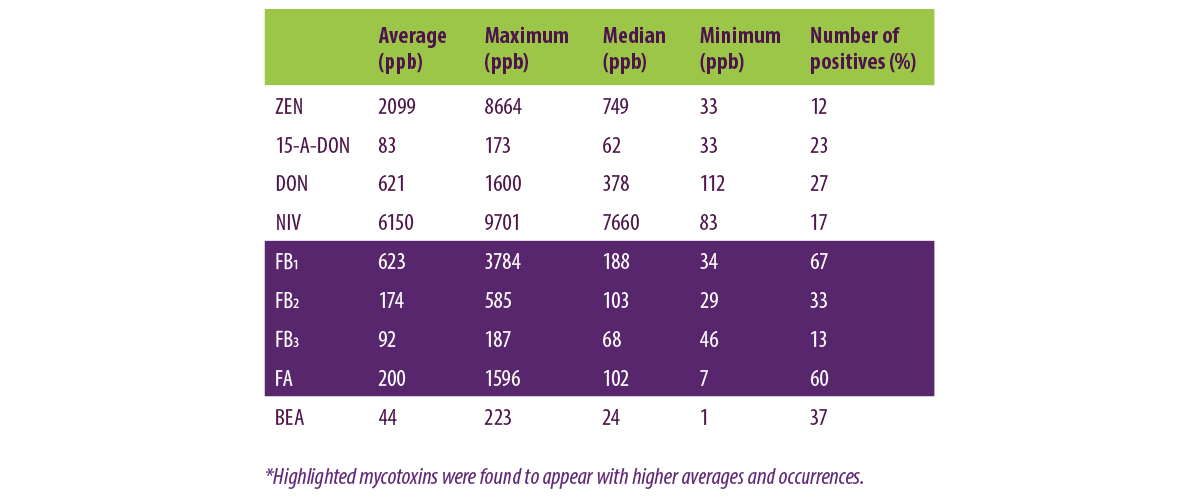
Table 4. Mycotoxin contamination levels (ppb) in corn samples from Chile in 2022.
COLOMBIA
In 2022, 100% of the corn samples from Colombia were contaminated with more than one type of mycotoxin (Figure 5).
⇰ Among these, 3% had three types of mycotoxins and 97% had more than three types of mycotoxins.
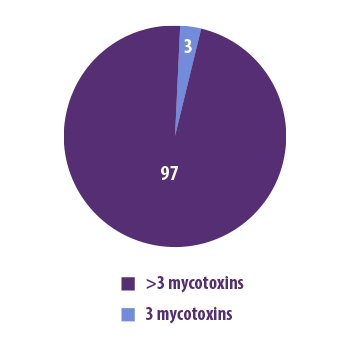
Figure 5. Number of mycotoxins (%) per corn sample from Colombia.
Table 5 shows that fumonisins were the predominant mycotoxins in 2022 harvested corn from Colombia.
 FB1, FB2, and FB3 were detected in all (100%) the samples.
FB1, FB2, and FB3 were detected in all (100%) the samples. AFB1, with an average of 1 ppb, was detected in 40% of the corn samples.
AFB1, with an average of 1 ppb, was detected in 40% of the corn samples. Among emerging mycotoxins, FA was detected in 97% of the corn samples and BEA was detected in 93% of the corn samples tested using LC-MS/MS.
Among emerging mycotoxins, FA was detected in 97% of the corn samples and BEA was detected in 93% of the corn samples tested using LC-MS/MS.
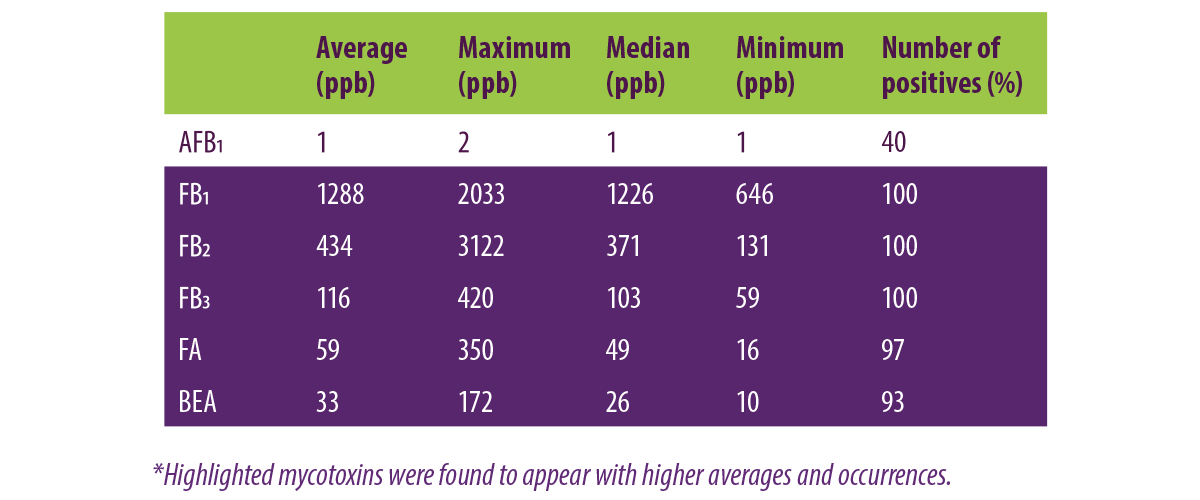
Table 5. Mycotoxin contamination levels (ppb) in corn samples from Colombia in 2022.
CROATIA
In 2022, 100% of the corn samples from Croatia were contaminated with one or more than one type of mycotoxin (Figure 6).
⇰ Among these, 3% of the samples had one type of mycotoxin, 4% had three types of mycotoxins and 93% had more than three types of mycotoxins.
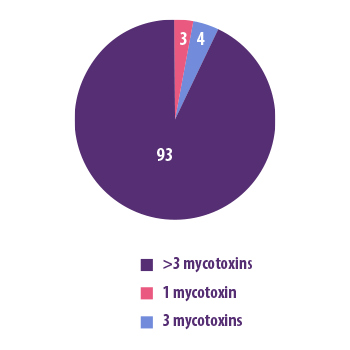
Figure 6. Number of mycotoxins (%) per corn sample from Croatia.
Table 6 shows that fumonisins were the predominant mycotoxins in 2022 harvested corn from Croatia.
 FB1 was detected in 95% of the samples, whereas FB2 and FB3 appeared in 89% and 71% of the tested corn samples, respectively.
FB1 was detected in 95% of the samples, whereas FB2 and FB3 appeared in 89% and 71% of the tested corn samples, respectively. AFB1, with an average of 100 ppb, was detected in 16% of the corn samples. AFB2, AFG1, and AFG2 were also detected in corn samples from Croatia.
AFB1, with an average of 100 ppb, was detected in 16% of the corn samples. AFB2, AFG1, and AFG2 were also detected in corn samples from Croatia. DON, with an average of 241 ppb, was detected in 41% of the tested samples and T-2/HT-2 toxins were detected in 17% of the samples.
DON, with an average of 241 ppb, was detected in 41% of the tested samples and T-2/HT-2 toxins were detected in 17% of the samples. FA was detected in 96% of the corn samples, MON in 41%, and BEA in 92% of the corn samples tested using LC-MS/MS.
FA was detected in 96% of the corn samples, MON in 41%, and BEA in 92% of the corn samples tested using LC-MS/MS.
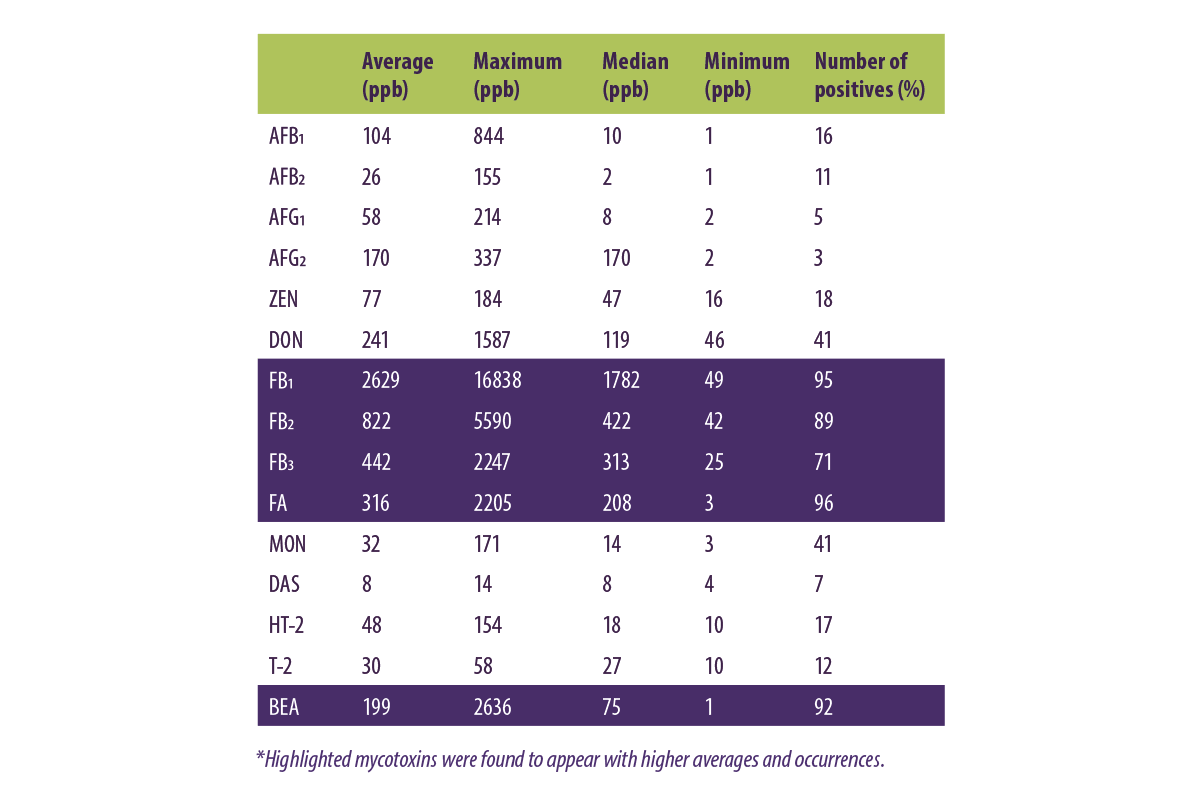
Table 6. Mycotoxin contamination levels (ppb) in corn samples from Croatia in 2022.
ECUADOR
In 2022, 100% of the corn samples from Ecuador were contaminated with more than one type of mycotoxin (Figure 7).
⇰ Among these, 3% of the samples had two types of mycotoxins, 43% had three types of mycotoxins and 54% had more than three types of mycotoxins.
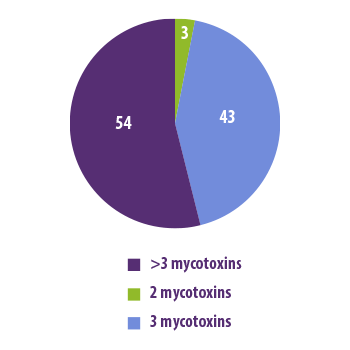
Figure 7. Number of mycotoxins (%) per corn sample from Ecuador.
Table 7 shows that fumonisins were the predominant mycotoxins in 2022 harvested corn from Ecuador.
 FB1 and FB2 were detected in 100% of the samples, whereas FB3 was detected in 93% of the corn samples.
FB1 and FB2 were detected in 100% of the samples, whereas FB3 was detected in 93% of the corn samples. AFB1, with an average of 14 ppb, was detected in 27% of the corn samples and AFB2 was detected in 7% of the corn samples.
AFB1, with an average of 14 ppb, was detected in 27% of the corn samples and AFB2 was detected in 7% of the corn samples. Among emerging mycotoxins, FA was detected in 17% of the corn samples, MON in 10%, and BEA in 13% of the corn samples tested using LC-MS/MS.
Among emerging mycotoxins, FA was detected in 17% of the corn samples, MON in 10%, and BEA in 13% of the corn samples tested using LC-MS/MS.
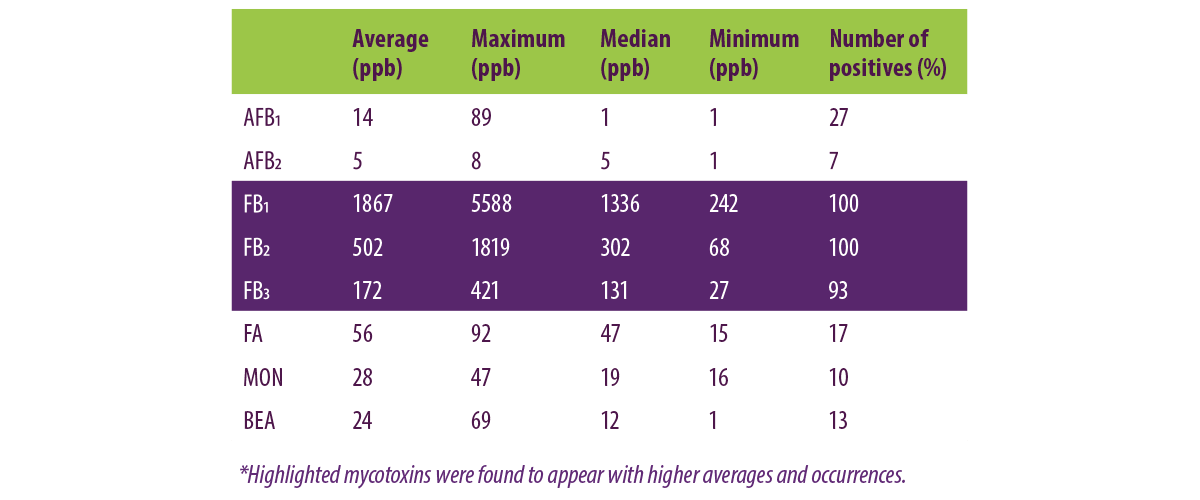
Table 7. Mycotoxin contamination levels (ppb) in corn samples from Ecuador in 2022.
GUATEMALA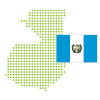
In 2022, 100% of the corn samples from Guatemala were contaminated with more than one type of mycotoxin.
⇰ Among these all the samples (100%) were found to contain more than three types of mycotoxins.
Table 8 shows that fumonisins were the predominant mycotoxins in 2022 harvested corn from Guatemala.
 All the corn samples (100%) were found to contain FB1, FB2, and FB3.
All the corn samples (100%) were found to contain FB1, FB2, and FB3. AFB1, with an average of 6 ppb, was detected in 80% of the corn samples, AFB2 in 7%, and DON in 20% of the tested samples.
AFB1, with an average of 6 ppb, was detected in 80% of the corn samples, AFB2 in 7%, and DON in 20% of the tested samples. Among emerging mycotoxins, FA and BEA were detected in all the samples (100%) and MON was detected in 20% of the corn samples tested using LC-MS/MS.
Among emerging mycotoxins, FA and BEA were detected in all the samples (100%) and MON was detected in 20% of the corn samples tested using LC-MS/MS.

Table 8. Mycotoxin contamination levels (ppb) in corn samples from Guatemala in 2022.
ITALY
In 2022, 100% of the corn samples from Italy were contaminated with more than one type of mycotoxin.
⇰ Among these, all the samples (100%) were found to contain more than three types of mycotoxins.
Table 9 shows that fumonisins were the predominant mycotoxins in the 2022 corn samples harvested corn from Italy.
 FB1 was detected in all the corn samples (100%), whereas FB2 and FB3 were detected in 88% of the corn samples.
FB1 was detected in all the corn samples (100%), whereas FB2 and FB3 were detected in 88% of the corn samples. AFB1, with an average of 224 ppb, was detected in 50% of the corn samples, AFB2 in 25% and DON in 25% of the tested samples.
AFB1, with an average of 224 ppb, was detected in 50% of the corn samples, AFB2 in 25% and DON in 25% of the tested samples. Among emerging mycotoxins, FA and BEA were detected in all the samples (100%) and MON was detected in 50% of the corn samples tested using LC-MS/MS.
Among emerging mycotoxins, FA and BEA were detected in all the samples (100%) and MON was detected in 50% of the corn samples tested using LC-MS/MS.
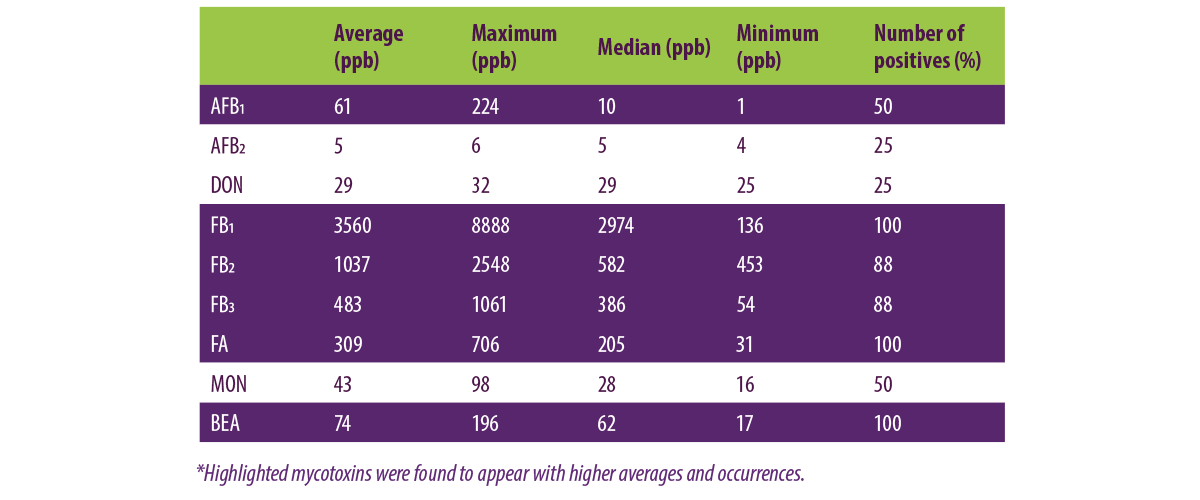
Table 9. Mycotoxin contamination levels (ppb) in corn samples from Italy in 2022.
MEXICO
In 2022, 100% of the corn samples from Mexico were contaminated with more than one type of mycotoxin.
⇰ Among these, all the samples (100%) were found to contain more than three types of mycotoxins.
Table 10 shows that fumonisins were the predominant mycotoxins in 2022 harvested corn from Mexico.
 FB1, FB2, and FB3 were detected in all the corn samples (100%).
FB1, FB2, and FB3 were detected in all the corn samples (100%). AFB1, with an average of 19 ppb, was detected in 58% of the corn samples.
AFB1, with an average of 19 ppb, was detected in 58% of the corn samples. ZEN was detected in 50% of the samples and 15-ADON and DON were detected in 54% of the corn samples.
ZEN was detected in 50% of the samples and 15-ADON and DON were detected in 54% of the corn samples. Among emerging mycotoxins, FA was detected in 96% of the samples, MON in 62% and BEA in 65% of the corn samples tested using LC-MS/MS.
Among emerging mycotoxins, FA was detected in 96% of the samples, MON in 62% and BEA in 65% of the corn samples tested using LC-MS/MS.
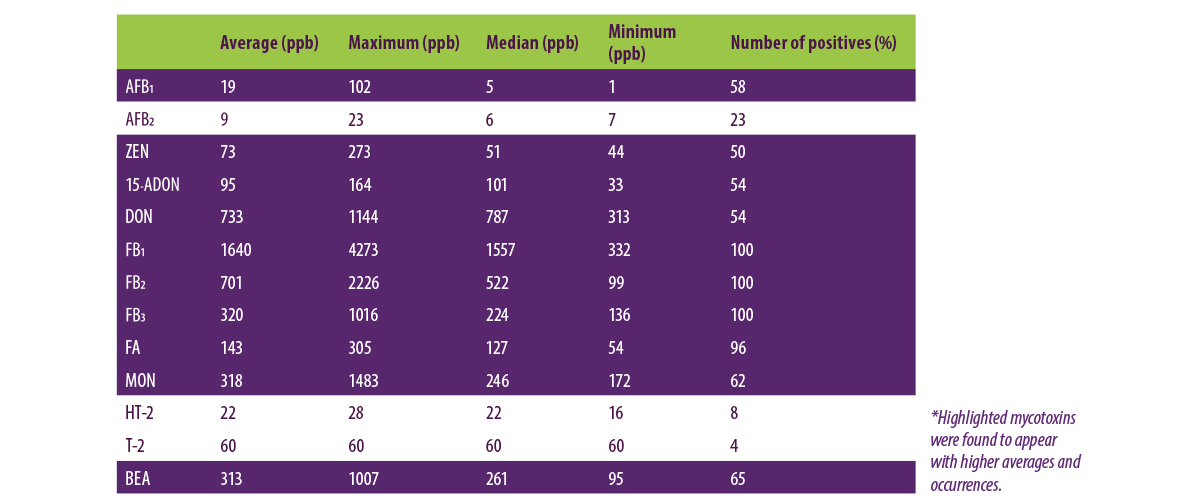
Table 10. Mycotoxin contamination levels (ppb) in corn samples from Mexico in 2022.
PHILIPPINES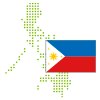
In 2022, 100% of the corn samples from the Philippines were contaminated with more than one type of mycotoxin.
⇰ Among these, all the samples (100%) were found to contain more than three types of mycotoxins.
Table 11 shows that fumonisins were the predominant mycotoxins in 2022 in corn harvested from Philippines.
 FB1 was detected in all the corn samples (100%), FB2 in 86%, and FB3 in 57% of the tested corn samples.
FB1 was detected in all the corn samples (100%), FB2 in 86%, and FB3 in 57% of the tested corn samples. AFB1, with an average of 29 ppb, was detected in 93% of the corn samples and AFB2 was detected in 71% of the corn samples.
AFB1, with an average of 29 ppb, was detected in 93% of the corn samples and AFB2 was detected in 71% of the corn samples. ZEN was detected in 50% of the corn samples.
ZEN was detected in 50% of the corn samples. Among emerging mycotoxins, FA was detected in 100% of the samples, MON in 36%, BEA in 29%, and DAS and ENN B were detected in 14% of the corn samples tested using LC-MS/MS.
Among emerging mycotoxins, FA was detected in 100% of the samples, MON in 36%, BEA in 29%, and DAS and ENN B were detected in 14% of the corn samples tested using LC-MS/MS.
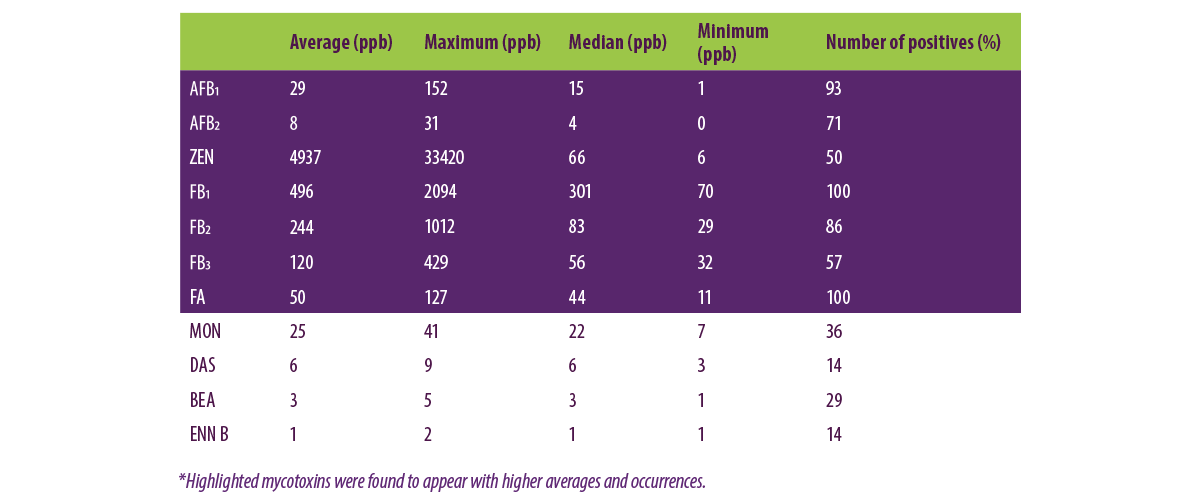
Table 11. Mycotoxin contamination levels (ppb) in corn samples from Philippines in 2022.
PERU
In 2022, 100% of the corn samples from Peru were contaminated with more than one type of mycotoxin.
⇰ Among these, all the samples (100%) were found to contain more than three types of mycotoxins.
Table 12 shows that fumonisins were the predominant mycotoxins in 2022 in corn harvested from Peru.
 FB1, FB2, and FB3 were detected in all the corn samples (100%).
FB1, FB2, and FB3 were detected in all the corn samples (100%). Among emerging mycotoxins, FA was detected in 93% of the samples and MON in 14% of the corn samples tested using LC-MS/MS.
Among emerging mycotoxins, FA was detected in 93% of the samples and MON in 14% of the corn samples tested using LC-MS/MS.
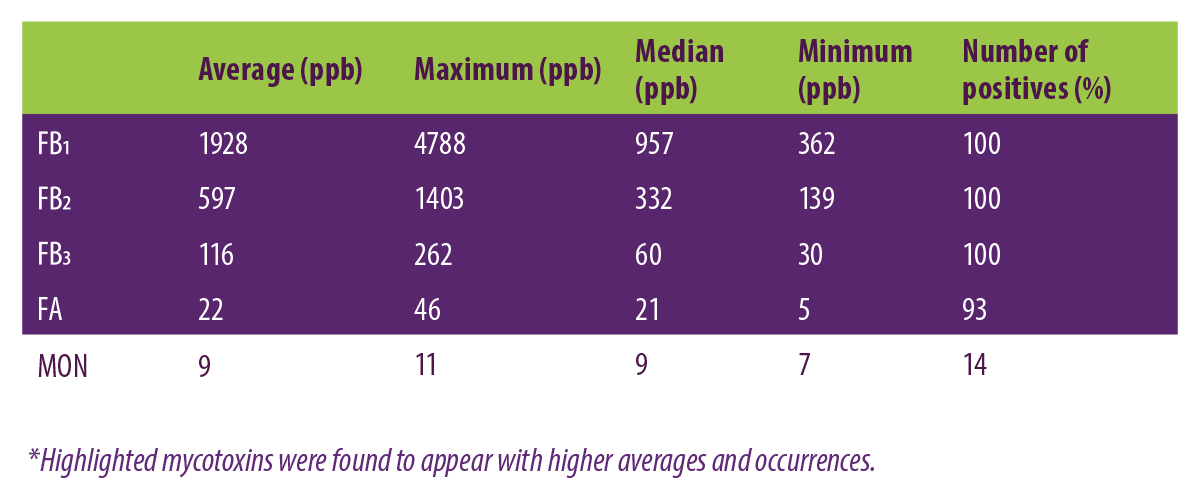
Table 12. Mycotoxin contamination levels (ppb) in corn samples from Peru in 2022.
SERBIA
In 2022, 9% of the corn samples harvested from Serbia were not contaminated with mycotoxins and 91% had one or more than one type of mycotoxin (Figure 8).
⇰ Among these, 10% of the corn samples from Serbia were found to contain one type of mycotoxin, 6% had two types of mycotoxins, and 75% had more than three types of mycotoxins.
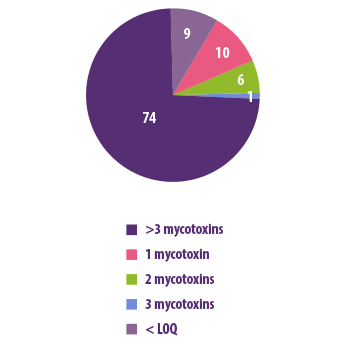
Figure 8. Number of mycotoxins (%) per corn sample from Serbia.
Table 13 shows that fumonisins were the predominant mycotoxins in 2022 in corn harvested from Serbia.
 FB1 was detected in 78% of the corn samples, FB2 in 67% and FB3 in 52% of the samples.
FB1 was detected in 78% of the corn samples, FB2 in 67% and FB3 in 52% of the samples. AFB1, with an average of 129 ppb, was detected in 63% of the corn samples alongside the presence of AFB2, AFBG1, and AFG2.
AFB1, with an average of 129 ppb, was detected in 63% of the corn samples alongside the presence of AFB2, AFBG1, and AFG2. OTA was detected in 24% of the samples.
OTA was detected in 24% of the samples. Among emerging mycotoxins, FA was detected in 84% of the samples, DAS in 36%, T-2/HT-2 in 7%, and BEA in 63% of the corn samples tested using LC-MS/MS
Among emerging mycotoxins, FA was detected in 84% of the samples, DAS in 36%, T-2/HT-2 in 7%, and BEA in 63% of the corn samples tested using LC-MS/MS
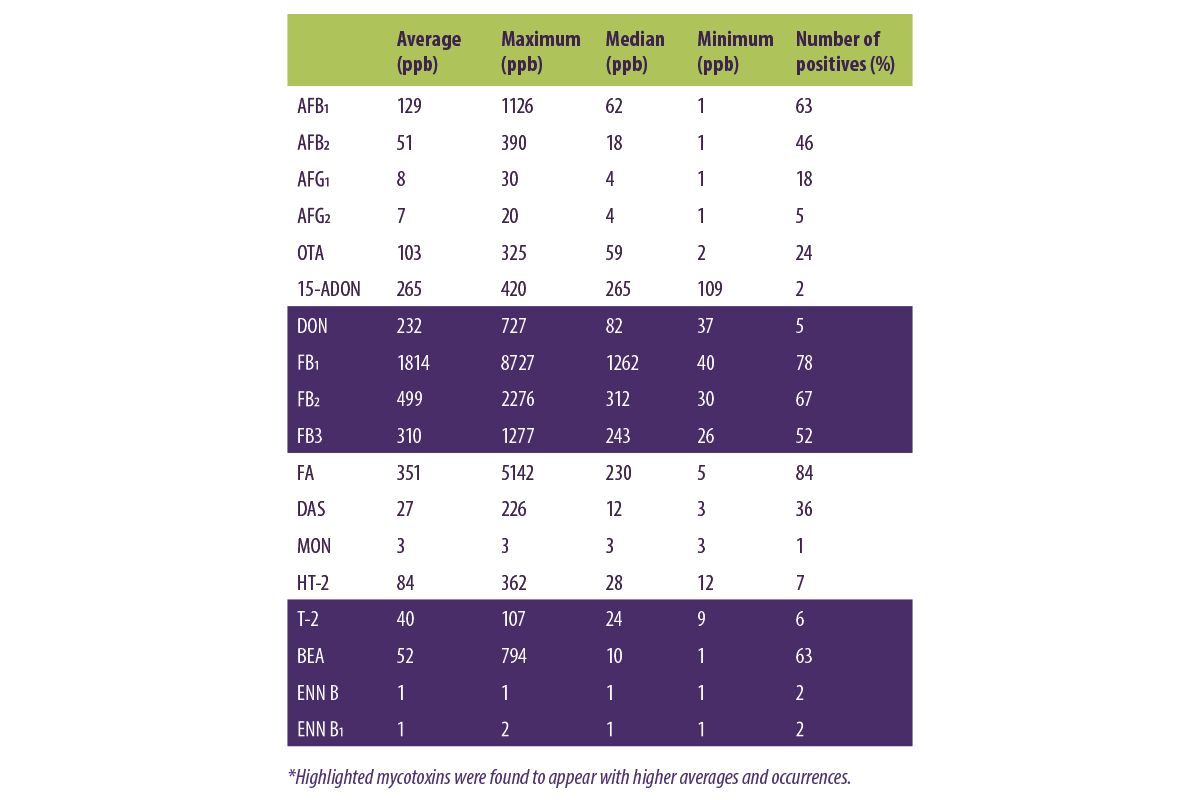
Table 13. Mycotoxin contamination levels (ppb) in corn samples from Serbia in 2022.
SOUTH AFRICA
In 2022, 100% of the corn samples from South Africa were contaminated with more than one type of mycotoxin.
⇰ Among these, all the samples (100%) were found to contain more than three types of mycotoxins.
 DON, with an average of 100 ppb, was detected in all the samples (100%) and 15-ADON was detected in 60% of the corn samples.
DON, with an average of 100 ppb, was detected in all the samples (100%) and 15-ADON was detected in 60% of the corn samples. FB1 was only detected in 40% of the corn samples.
FB1 was only detected in 40% of the corn samples. Among emerging mycotoxins, FA and MON were detected in all the corn samples (100%) tested using LC-MS/MS.
Among emerging mycotoxins, FA and MON were detected in all the corn samples (100%) tested using LC-MS/MS.
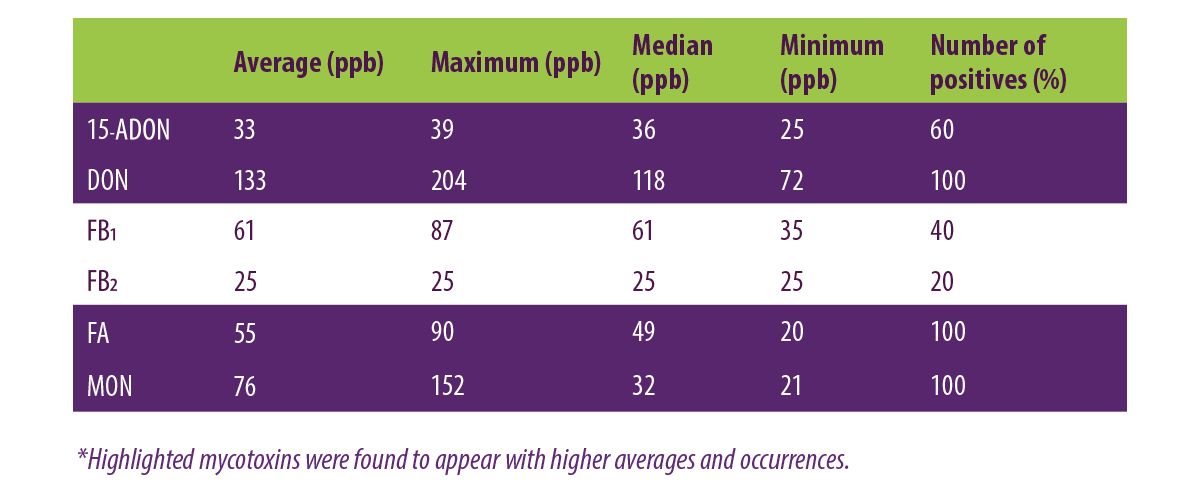
Table 14. Mycotoxin contamination levels (ppb) in corn samples from South Africa in 2022.
TAIWAN
In 2022, 100% of the corn samples from Taiwan were contaminated with one or more than one type of mycotoxin (Figure 9).
⇰ Among these, 7% had two types of mycotoxins, whereas 93% had more than three types of mycotoxins.
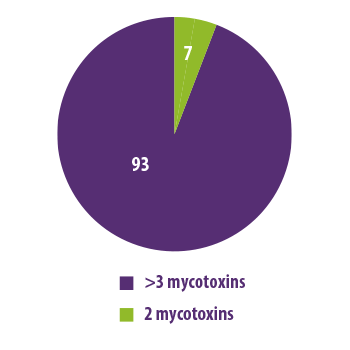
Figure 9. Number of mycotoxins (%) per corn sample from Taiwan.
Table 15 shows that fumonisins were the predominant mycotoxins in 2022 in corn harvested from Taiwan.
 FB1 was detected in 78% of the corn samples, FB2 in 59%, and FB3 in 44 % of the samples.
FB1 was detected in 78% of the corn samples, FB2 in 59%, and FB3 in 44 % of the samples. AFB1, with an average of 1 ppb, was detected in 7% of the corn samples.
AFB1, with an average of 1 ppb, was detected in 7% of the corn samples. DON, with an average of 243 ppb, was detected in 67% of the samples and 15-ADON was detected in 41% of the corn samples.
DON, with an average of 243 ppb, was detected in 67% of the samples and 15-ADON was detected in 41% of the corn samples. Among emerging mycotoxins, FA was detected in 81% of the samples and BEA was detected in 59% of the corn samples tested using LC-MS/MS.
Among emerging mycotoxins, FA was detected in 81% of the samples and BEA was detected in 59% of the corn samples tested using LC-MS/MS.
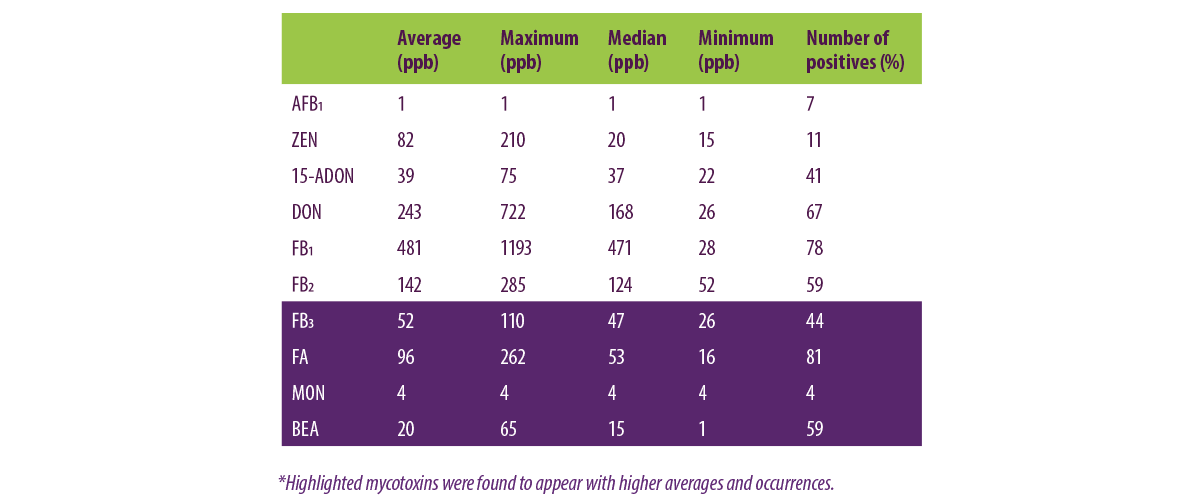
Table 15. Mycotoxin contamination levels (ppb) in corn samples from Taiwan in 2022.

CONCLUSIONS
In 2022, among the corn harvested from 15 countries (Argentina, Bosnia & Herzegovina, Brazil, Chile, Colombia, Croatia, Ecuador, Guatemala, Italy, Mexico, Philippines, Peru, Serbia, South Africa, and Taiwan), 96% of the samples were contaminated with one or more than one type of mycotoxin (Figure 10).
⇰ Among these samples, 4% had one type of mycotoxin, 4% had two types of mycotoxins, 7% had 3 types of mycotoxins, and 81% had more than three types of mycotoxins.
| Fumonisins were the main mycotoxins detected in majority of corn samples and Fusaric acid was the predominant among emerging mycotoxins. |
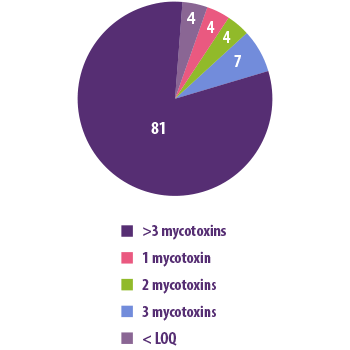
Figure 10. Number of mycotoxins (%) detected in corn samples from 15 countries in the 2022 harvest.
EMERGING MYCOTOXINS ARE LESSER-KNOWN MYCOTOXINS
Fusaric acid (FA), moniliformin (MON), beauvericin (BEA), enniatin A (ENN A), enniatin A1 (ENN A1), enniatin B (ENN B), and enniatin B1 (ENN B1) are the most common examples of emerging mycotoxins.
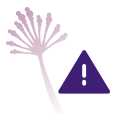 These mycotoxins are neither routinely controlled, nor legislatively regulated. However, research indicates that emerging mycotoxins are rapidly becoming prevalent co-contaminants in animal feed materials (corn, wheat, barley, etc.) alongside other main mycotoxins (AFB1, DON, ZEN, FBs).
These mycotoxins are neither routinely controlled, nor legislatively regulated. However, research indicates that emerging mycotoxins are rapidly becoming prevalent co-contaminants in animal feed materials (corn, wheat, barley, etc.) alongside other main mycotoxins (AFB1, DON, ZEN, FBs).Due to the lack of toxicity data, proper risk assessment of the impact of these emerging mycotoxins on animal health and performance cannot be carried out.
CO-OCCURRENCE OF MORE THAN ONE MYCOTOXIN AND EMERGING MYCOTOXINS
The co-occurrence of more than one mycotoxin and the presence of emerging mycotoxins can lead to additive or synergistic effects when fed to sensitive animal species (e.g., swine and poultry, amongst others).
⇰ Currently, the risk for animal health derived from multi-mycotoxin exposure remains poorly understood.
| The data in this report suggests that incoming feed materials (corn, wheat, barley etc.) at the feed mill should be tested for mycotoxins present in these ingredients before manufacturing feed.
Additionally, technologies are required for the control of mixtures of such contaminants in feedstuffs predominantly based on corn to minimize impacts on animal development. |

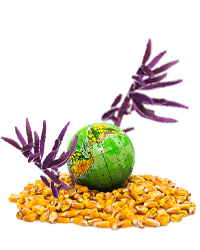



 Micotoxicosis prevention
Micotoxicosis prevention